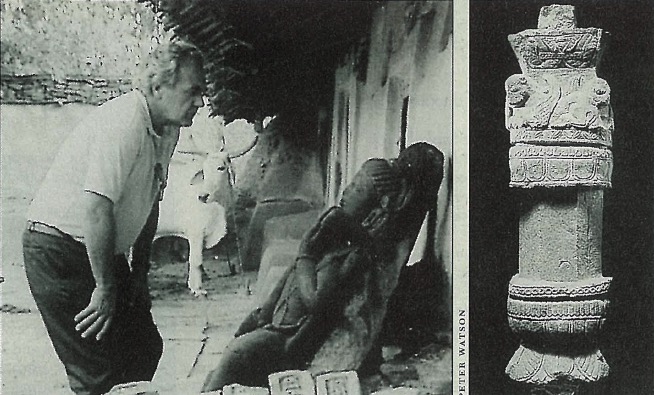Television audiences in the UK and the USA watched in amazement as Roeland Kollewijn of the Sotheby’s auction house casually advised an undercover reporter on film she’d get more money for an old Italian painting in England than in Italy. He not only recommended she smuggle it–it is a crime in Italy to remove a painting of that age–he offered to do it for her and to arrange for Sotheby’s to pick it up in London. The reporter, part of an elaborate sting operation engineered by a TV station and British art journalist Peter Watson, accepted the illicit offer. The painting was smuggled to London, picked up by Sotheby’s and auctioned.
This was not a chance piece of entrapment. Watson had received several boxes of documents filched from Sotheby’s by a disgruntled employee over a period of several years. The documents indicated a regular trade by Sotheby’s in stolen or illegally exported antiquities from not only Italy but many other countries–notably India. Five years of investigation by Watson resulted in the TV program and a just-published book, Sotheby’s, Inside Story. The dust jacket describes the contents: “The international auction house Sotheby’s has an unparalleled reputation as the world’s premier dealer in art and antiquities…. However, in these pages Peter Watson tells the story of his investigation into Sotheby’s and his discovery of practices that include: the facilitation of smuggling; the sale of antiquities known to have been stolen from tombs; the rigging of auctions by ‘chandelier bidding,’…”
The book does not disappoint, and Hindus will find chapter ten, “The Men from Bombay,” the most compelling. “Everyone who worked in [Sotheby’s] antiquities was well aware of the degree of smuggling that went on from India,” writes Watson. “Sotheby’s staff regularly travelled to India under cover, pretending to be on holiday or writing a book.” Watson managed to actually meet Mr. Fakrou Sham who, with his family, not only freely admitted on hidden camera that he smuggled antiques illegally out of India, he proudly pointed out several such items listed in Sotheby’s auction catalog. Asked how the objects were gotten out of India, Watson was told, “The diplomatic bag.” Watson goes on, “The Shams took their time amassing a great many objects–a whole container load–and then sent them out, perhaps when a diplomat was moving house.” Another method was to pack true antiques along with recently-made decorative fakes and ship them out of India.
Watson’s team later inspected the Sham’s material in London, six to seven rooms with thousands of Indian artifacts, one “chock-a-block” with items of museum quality, most of them from temples. The affable Watson explained to Hinduism Today by phone that it is a crime to take such antiques out of India, but it is not a crime to bring them into England. Even so, if an object is deemed to have been illegally acquired, then British law regards it as stolen property and title to it cannot be passed by auction or any other means. If the object is located, India could demand its return, and the buyer would have to sue the auction house to get his money back.
The investigative TV report and book have attracted attention in India, and one Mr. Pande of India’s Revenue Intelligence was in London to meet with Watson the day we called him. Watson is handing over to Pande 102 pages of Sotheby’s documents which refer to India. Pande is especially interested in retrieving one object mentioned in the TV program. The “Goat-Headed Goddess” had been stolen from the village Lokhari and sold by Sotheby’s at auction in 1988. In an emotionally touching scene the distraught village headman identified on camera the stolen Goddess in the auction catalog.
The case of Sotheby’s and India is far from over, and reports are the auction house is pulling back from the international antiquities market, as so much of the material coming from any country for auction is of questionable origin. There are more profitable and less controversial areas to focus on, such as the sale of Old Masters paintings (e.g. Van Gogh). India meanwhile has arrested the Shams in Mumbai. Watson said a proper expert could review all of Sotheby’s auction catalogs for the last decades which are available at the British Museum and in two days determine what and how much has been illegally taken out of India. Sotheby’s denies corporate culpability and blames the incidents on a few rogue employees. Roeland Kollewijn, for one, lost his job.


